Christopher Crenshaw’s The Fifties: A Prism
“All jazz is modern,” says Wynton Marsalis—and we owe the 1950s for that. The momentous decade became the crucible in which modern jazz was formed, as styles like modal, hard bop, third stream, and more melted together and artists like Miles Davis, Duke Ellington, and Ornette Coleman reached the height of their powers. Now, Jazz at Lincoln Center Orchestra trombonist Chris Crenshaw has taken inspiration from the era to create The Fifties: A Prism, the newest Blue Engine album.
“When I was presented with the idea of coming up with a suite dealing with the 1950s, I immediately realized this was going to cover all the genres of jazz, from bebop to freedom music,” Crenshaw says. Recorded live at The House of Swing by the JLCO with Wynton Marsalis in February 2017, The Fifties does exactly that, refracting all the energy from a creatively supercharged era through a 21st-century lens. The result is at turns playful and moving, melodic and challenging—but it’s always swinging.
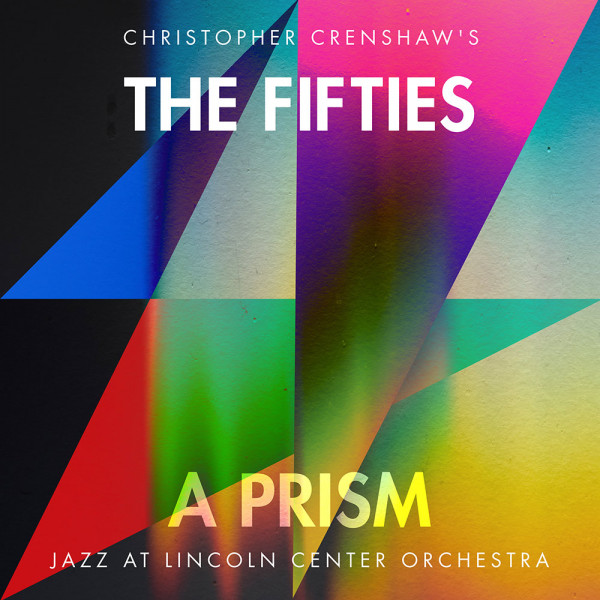
Album Info
| Ensemble | JLCO with Wynton Marsalis |
|---|---|
| Release Date | May 1st, 2020 |
| Recording Date | February 17-18, 2017 |
| Record Label | Blue Engine Records |
| Catalogue Number | BE0027 |
| Formats | Digital Download |
| Genre | Jazz at Lincoln Center Recordings |
| Digital Booklet | Download (pdf, 6 MB) |
Track Listing
| Track | Length | Preview |
|---|---|---|
| Flipped His Lid | 6:56 | Play |
| Just A-Slidin’ | 5:57 | Play |
| Conglomerate | 5:24 | Play |
| Cha-Cha Toda la Noche | 5:31 | Play |
| Unorthodox Sketches | 5:31 | Play |
| Pursuit of the New Thing | 10:14 | Play |
Liner Notes
There is perhaps no music that embodies the past, present, and future more than jazz. From the way much improvisation plays with meter to its creators’ commitment to forward-looking experimentation and innovation, every moment of jazz dances on the precipice of both the before and the after. Trombonist Christopher Crenshaw is a visionary member of the Jazz at Lincoln Center Orchestra, and through his unique musicianship dances nimbly between past, present, and future. He explores the many facets of jazz’s rich idiom on The Fifties, lending his talent and perspective to what has been and what is to come.
It’s fitting that Chris Crenshaw chose the visual of a prism for The Fifties, a decade that refracted and illuminated very different musical worlds, influences, and artists. The 50s beamed a rainbow of musical hues—including bebop, hard bop, cool jazz, modal jazz, Latin jazz, and free jazz—that forever colored and solidified the genre’s importance as a most comprehensive American art form.
To understand the 1950s is to truly know jazz music. At that time in the United States, jazz was a convergence of past, present, and future. This was a decade of revolution and traditionalism, a time of breaking down boundaries and the creation of new order. The invention and detonation of the atom bomb in 1945 forever changed our worldview, and we saw what was once whole become divided. A fragmentation of vision was seen in visual art (one can reference the representational work of artists like Pollock and Rothko evolving from figurative to abstract) as well as heard in the sounds of music as it moved from the sweet ease of the swing era to the frenetic and expressive sounds of bebop and beyond. The 50s continued the journey of both division and coalescence and forwarded new norms that voiced the friction of a restless evolution.
The Supreme Court’s decision in Brown v. Board of Education furthered the slow march toward civil rights that was, and continues to be, so defining to the Black American experience, and, as such, for the sound of jazz. A period of economic prosperity and suburban comfort created a new kind of jazz fan who listened on a turntable at home rather than in the dance halls. Curiosity about cultures, styles, and sounds from other nations was offset by McCarthyism, and the tension between social progressivism and fear-based conservatism created a tectonic pressure that yielded artistic diamonds.
The unique gifts that the 50s created are even more compellingly evidenced by the sheer number of significant artists creating powerful work throughout that decade. The founding fathers of jazz—Sidney Bechet, Louis Armstrong, Duke Ellington, and Nick LaRocca, to name a few—were working alongside modern innovators such as Miles Davis, John Coltrane, Ornette Coleman, Charles Mingus, and Lennie Tristano. Many of today’s living legends like Benny Golson, Wayne Shorter, Toshiko Akiyoshi, and Lou Donaldson were just coming on the scene at that time. The temptation of history is to define an era by one style, but the jazz music of the 50s defies such lazy categorization.
It takes an expert ear, discerning taste, and artistic assuredness to channel the multitudes of such a decade. Christopher Crenshaw’s talent is perfectly suited to the job. As Wynton Marsalis says of the trombonist’s work, “His arrangements and compositions are always so intelligent, pointed, and well-crafted.” While the compositions on this album have clear sources of inspiration, they expand on their references and tell new stories, refracting back through the prism to create a new kind of music fit for these current times.
The first movement, “Flipped His Lid,” is very much influenced by the energetic bebop that emanated from the end of the 1940s yet colored by the cool, linear harmonic movement of Lennie Tristano and Warne Marsh. Sherman Irby embraces the implications of Crenshaw’s engaging chord structure with flow and optimistic spirit on alto saxophone. Stantawn Kendrick, on tenor, develops his ideas with playful clarity in the swinging hard bop tradition. Dan Nimmer’s solo finds interesting jumps and leaps, starting with only his right hand and referencing Tristano’s proclivity to leave out the “comping” (left) hand. Lenny’s recording of his own composition “Line Up” is an example. Brilliant counterpoint is at the heart of the shout chorus, and throughout, Ali Jackson uses the drum kit to great melodic effect.
“Just A-Slidin’” is unabashedly swinging in the vein of the hard-bop bands led by Horace Silver, J.J. Johnson and Kai Winding, and Art Blakey, while also being reminiscent of the song “Wabash” from the classic recording Cannonball and Coltrane. Crenshaw hands over the solo responsibilities to his section mates, Vince Gardner and Elliot Mason, both faithful to the soulful and swinging vibe of the piece without sacrificing their individual personalities. The movement culminates in a riveting stop-time section featuring Gardner and Mason on technically demanding phrases that could only have been composed by a master of this instrument. Ali’s drums are effortlessly impressive—his four-beats-per-measure bass drum echo the giants of the swing era.
In “Conglomerate,” Crenshaw conjures up the cool West Coast style of Gerry Mulligan and Chet Baker with impeccable contrapuntal writing. He uses the title both as a noun—different parts grouped together without losing their distinct identities—and as a verb: to bring together into a collective. The piano serves the function of a horn in the ensemble passages. Paul Nedzela and Marsalis give us a wonderful taste of the Mulligan/Baker style, improvising in thematically inspired counterpoint. Kendrick plays a very relaxed and mature chorus, effectively mixing short melodic statements with longer, flowing eighth-note lines. Bassist Carlos Henriquez ends his playful turn with a whole note rich with anticipation, handing it back to the horns to weave an intricate call-and-response. After a quick reprise of the melody, the piece concludes with a collective, unapologetic smile, rather than the expected fanfare.
“Cha-Cha Toda la Noche” perfectly captures the style of Latin jazz that was popularized by Tito Puente, Tito Rodríguez, and Machito. The opening section features Tatum Greenblatt singing the lead line on trumpet. Christopher’s use of Victor Goines’s lead clarinet over beautifully voiced saxophones calls up the rich harmonic implications of Duke Ellington. A dialog between Vince Gardner and Goines ensues, juxtaposing the theme played by the trombone with filigree clarinet answers in the high register. Both soloists then make robust melodic statements. Ali Jackson’s authentic groove demonstrates why this style of music continues to be so popular—and pleasurable.
With “Unorthodox Sketches,” Christopher creates four statements in the style of Third Stream jazz, a term coined by composer Gunther Schuller to describe a fusion of jazz improvisation and classical music. True to the style of Gil Evans and Schuller, Crenshaw’s orchestrations utilize a flugelhorn as the lead voice over bucket-muted trombones sounding much like a French horn section. Harmon-muted trumpets trade off with the reed section on poignant phrases with Victor leading on the clarinet. Christopher then chooses four woodwinds typically found in the symphonic orchestra to improvise over a modal chord progression, reminiscent of Miles Davis’s Kind of Blue. Goines’s expressive clarinet, Irby’s poetic, soulful alto flute, my own piccolo, and Nedzela’s clear and confident bass clarinet achieve a fusion of jazz and classical vocabulary.
The feeling of late 50s Ornette Coleman and Don Cherry is unmistakable on “Pursuit of the New Thing.” Perhaps an homage to Coleman’s The Shape of Jazz to Come, Crenshaw uses pedals, out-of-time sections, blistering eighth-note lines, uneven groups of measures, and the blues to great effect. The rhythm section comes to vibrant life under spirited and playful solos from Wynton on trumpet and myself on alto. The freedom of the piece inspires them to search for new material. Ali Jackson’s laugh indicates surprise and delight during moments of Wynton’s improvisations, reminding us that “serious” music can be great fun. Kendrick is clearly at home in this environment, playing with abandon, using trills and intervallic jumps to contrast his rich flowing lines.
Wynton and I hold out the last note for what seems like an eternity. We didn’t want to let this performance come to an end, and hopefully neither will you.
— Ted Nash
Credits
Track listing:
1. Flipped His Lid (6:56)
Solos: Sherman Irby (alto saxophone), Stantawn Kendrick (tenor saxophone), Dan Nimmer (piano)
2. Just A-Slidin’(5:57)
Solos: Vincent Gardner (trombone), Elliot Mason (trombone), Ali Jackson (drums)
3. Conglomerate (5:24)
Solos: Paul Nedzela (baritone saxophone), Wynton Marsalis (trumpet), Stantawn Kendrick (tenor saxophone), Carlos Henriquez (bass),
4. Cha-Cha Toda la Noche (5:31)
Solos: Victor Goines (clarinet), Vincent Gardner (trombone), Carlos Henriquez (bass)
5. Unorthodox Sketches (5:31)
Solos: Victor Goines (clarinet), Sherman Irby (alto flute), Ted Nash (piccolo), Paul Nedzela (bass clarinet)
6. Pursuit of the New Thing (10:14)
Solos: Ted Nash (alto saxophone), Wynton Marsalis (trumpet), Stantawn Kendrick (tenor saxophone)
Personnel:
THE JAZZ AT LINCOLN CENTER ORCHESTRA WITH WYNTON MARSALIS
2016-17 Concert Season
REEDS
Sherman Irby — alto saxophone, alto flute
Ted Nash — alto saxophone, piccolo
Victor Goines — tenor saxophone, clarinet (February 17 only)
(*) Dan Block— tenor saxophone, clarinet (substitute for Victor Goines, February 18 only)
Walter Blanding — tenor saxophone
(*) Stantawn Kendrick — tenor saxophone
Paul Nedzela — baritone saxophone, bass clarinet
TRUMPETS
(*) Tatum Greenblatt
Marcus Printup
Kenny Rampton
Wynton Marsalis
TROMBONES
Vincent Gardner
Chris Crenshaw — music director
Elliot Mason
RHYTHM SECTION
Dan Nimmer (piano)
Carlos Henriquez (bass)
Ali Jackson (drums)
(*)Indicates substitute orchestra member
Executive Producer: Wynton Marsalis
Producer: Chris Crenshaw
Front of House Engineer: David Robinson
Recording Engineers: Rob Macomber for SiriusXM and James P. Nichols
Mixing Engineer: Rob Macomber
Mastered by Mark Wilder at Battery Studios, NYC 2020
Label Head and A&R: Gabrielle Armand
Label Manager: Aaron Bisman
Art Direction: Brian Welesko
Design: Patricia Encarnación
Legal: Daphnée Saget Woodley, Wesley Friedman, and Allison Job
Assistant Label Manager: Jake Cohen
Product Manager: Madeleine Cuddy
Marketing Manager: Nicole Morales
Product and Marketing Assistant: Benjamin Korman
Director of Public Relations and External Communications: Zooey T. Jones
Public Relations Manager: Madelyn Gardner
Music Administration: Kay Wolff and Christianna English
Audio Archivists: Omar Little and Ben Carbone
Concert Programming: Jason Olaine and Georgina Javor
Concert Line Producer: Justin Bias
Photography: Frank Stewart
Liner Notes: Ted Nash
Recorded on February 17-18, 2017 at Jazz at Lincoln Center’s Frederick P. Rose Hall.
Additional recording on November 21, 2019 at Jazz at Lincoln Center’s Frederick P. Rose Hall.
Commissioned by Jazz at Lincoln Center with the generous support of the Howard Gilman Foundation and first performed by the Jazz at Lincoln Center Orchestra with Wynton Marsalis at Rose Theater, Frederick P. Rose Hall on February 17, 2017.
Christopher Crenshaw wishes to dedicate this album to Keven Eugene Hill.
Support for Blue Engine Records is provided in part by the Arnhold Family, Jay Pritzker Foundation, Dalio Foundation, and Boulé Foundation.
Additional support is provided by Diana and Joseph DiMenna, Robert and Helen Appel, Lisa Schiff, Leonard and Louise Riggio, and David and Thelma Steward.
The mission of Jazz at Lincoln Center is to entertain, enrich, and expand a global community for jazz through performance, education, and advocacy.
jazz.org
blueenginerecords.org
℗&©2020 Jazz at Lincoln Center, Inc.
LOGOS: Blue Engine Records™, Jazz ™
Personnel
- Dan Nimmer – piano
- Carlos Henriquez – bass
- Ali Jackson – drums, tambourine
- Tatum Greenblatt – trumpet
- Kenny Rampton – trumpet
- Marcus Printup – trumpet
- Vincent Gardner – trombone
- Chris Crenshaw – trombone
- Elliot Mason – trombone
- Victor Goines – tenor sax, soprano sax, clarinet, bass clarinet
- Ted Nash – alto sax, soprano sax, clarinet, flute, piccolo
- Sherman Irby – alto sax, soprano sax, clarinet, flute
- Dan Block – tenor sax, clarinet, bass clarinet
- Stantawn Kendrick – tenor sax, flute
- Walter Blanding – tenor sax, soprano sax, clarinet
- Paul Nedzela – baritone sax, bass clarinet
Also of Interest
-
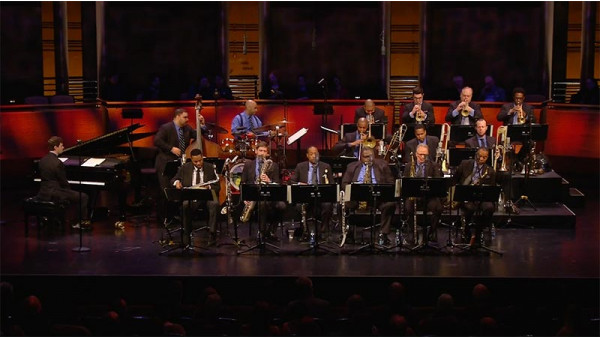 Videos
Videos
The Fifties: A Prism (trailer) - JLCO with Wynton Marsalis
-
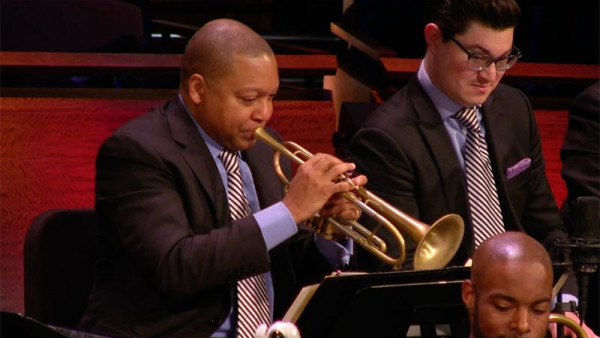 Videos
Videos
Pursuit of the New Thing - JLCO with Wynton Marsalis
-
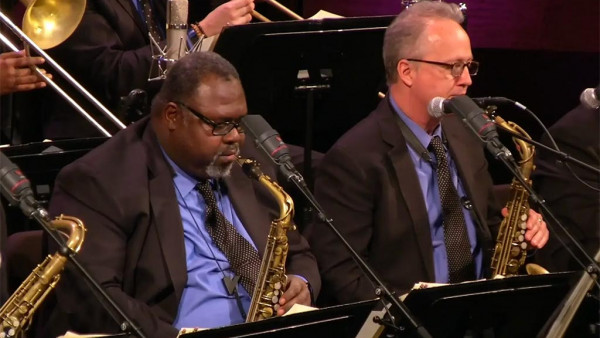 Videos
Videos
Cha-Cha Toda la Noche - JLCO with Wynton Marsalis
-
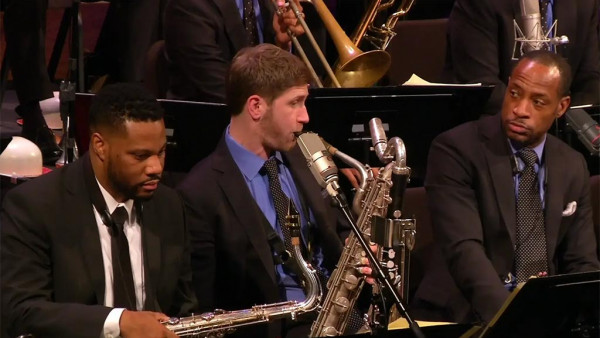 Videos
Videos
Conglomerate - JLCO with Wynton Marsalis
-
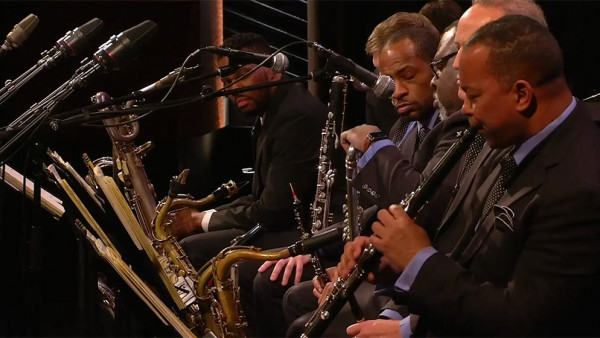 Videos
Videos
Unorthodox Sketches - JLCO with Wynton Marsalis
-
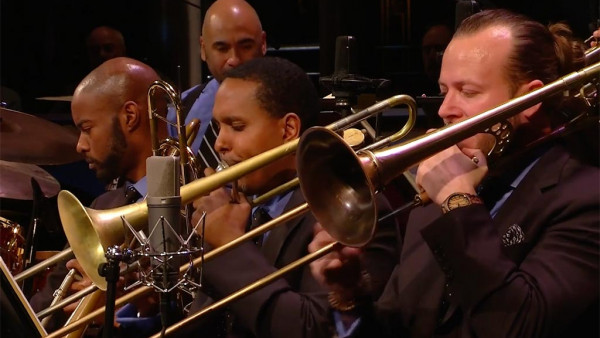 Videos
Videos
Just A-Slidin’ - JLCO with Wynton Marsalis
-
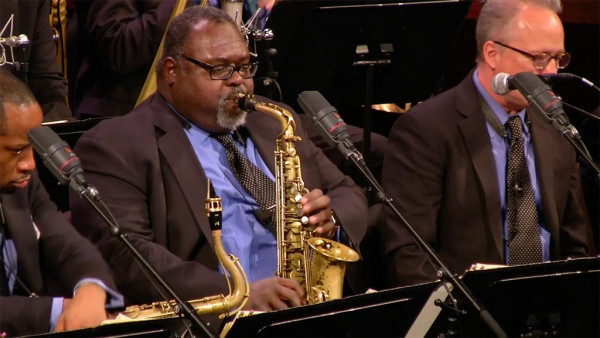 Videos
Videos
Flipped His Lid - JLCO with Wynton Marsalis
-
 News
News
REVIEW: Jazz at Lincoln Center Orchestra’s (JLCO) Christopher Crenshaw Composed and Arranged ‘The Fifties: A Prism’
